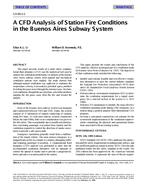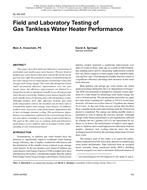Heat removal troffers have seen increasing use as devices for removing, approximately at the source, energy generated by lights, particularly in internal spaces. Increased lighting levels have helped to focus attention on heat removal with the resulting use of luminaires and ventilated ceiling plenums.In 1966 the Air Diffusion Council (ADC) formulated a test procedure and published a test code (TC 66) for the thermal evaluation of heat removal troffers. A facility for industry-wide tests was established by ADC. In additionsome manufacturers belonging to ADC installed the necessary apparatus to perform these tests. Since that time, a large number of troffer configurations and sizes hav~ been tested and sufficient data have been obtained which the authors feel can be compared and from which generalized conclusions can be drawn.
In January, 1968, the Illuminating Engineering Society (IES) published the report of the Subcommittee on Photometric and Thermal Testing of Heat Transfer Luminaires. Test methods were described along with specifications for instrumentation, data reduction and data presentation. The work of Ballman, Mueller and Bonvallet and their coworkers are cited as references. Three types of calorimeters are identified and approved for use as part of this method; the zero heat-loss, the calibrated heat-loss and the continuous fluid-flow calorimeter. All three require control of the calorimeter (plenum) temperature or control of the calorimeter surface temperatures, the latter to reduce the calorimeter heat loss to zero. With these conditions, the troffer is tested under situations which seldom occur in practice: for example, only with high return air flow rates will the plenum temperature approach the ambient temperature thereby reducing the plenum heat loss to near zero.
The calorimeter specified by ADC-TC 66 is a combination of the “calibrated heat-loss” and the “continuous fluid-flow” type and is described below. The IES method stresses the control of the calorimeter temperature whereas the ADC calorimeter permits the temperature to float. It is the opinion of the authors that this method provides more realistic data than the IES Code. The IES method will give values of heat removal which are approximately equal to the heat removal plus calorimeter loss as determined using the ADC method.
Citation: ASHRAE Transactions, Volume 77, Part 2, Washington, DC
Product Details
- Published:
- 1971
- Number of Pages:
- 7
- File Size:
- 1 file , 760 KB
- Product Code(s):
- D-WA-2196


